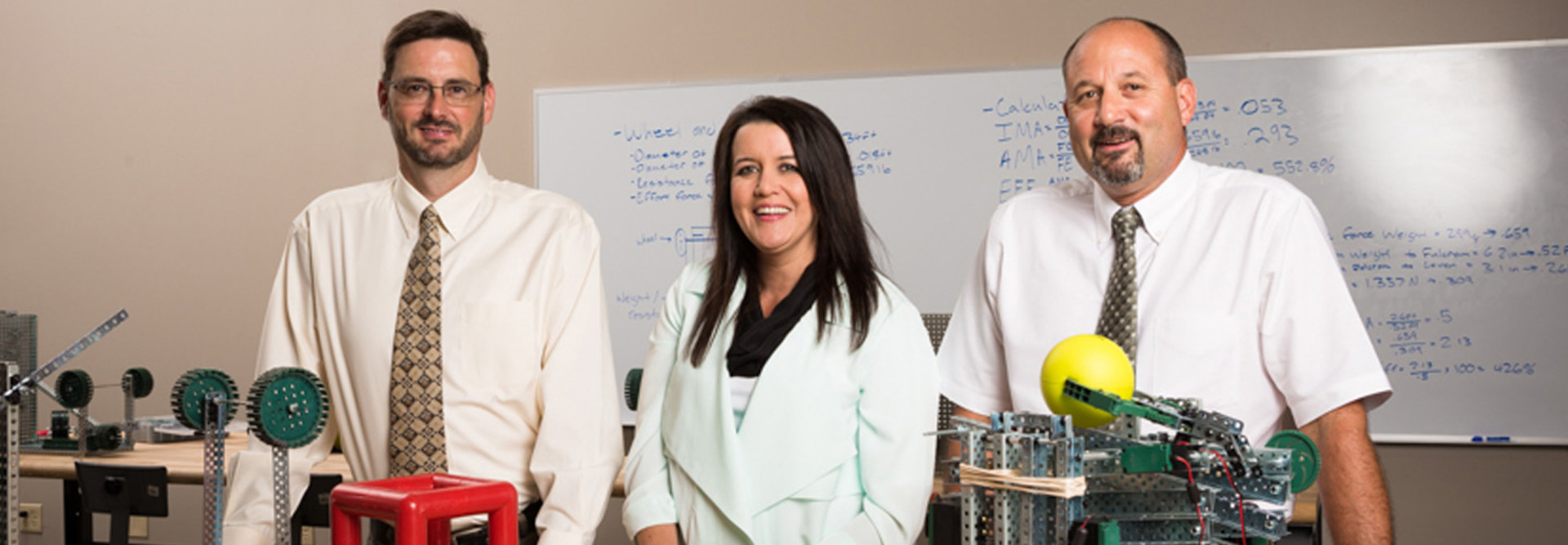New K–12 Networks Power STEM’s Future
Over the last 20 years, Star City High School in Star City, Ark., saw only a handful of graduating seniors accepted into a college engineering program.
“We’re in an area where there aren’t a lot of engineering jobs, so many of our students didn’t even understand what engineers did,” Principal Michael Walker says.
That was before Star City, a rural Pre-K–12 school district of 1,650 students, adopted Project Lead the Way (PLTW) — a rigorous, hands-on science, technology, engineering and math (STEM) curriculum — and began investing in the robust computing and networking infrastructure required to support it.
Today, more than 50 percent of Star City students take engineering, biomedical or computer science courses. They operate robotics systems, build integrated circuit boards, create apps for mobile devices and diagnose real-world medical cases.
The percentage of 2015 ACT-tested students considered ready for college-level science
SOURCE: ACT, “The Condition of College and Career Readiness, 2015”
And this fall, five 2015 Star City graduates — among the first cohort of students to take PLTW courses — are enrolled in four-year engineering programs. Another student was accepted into the pre-med program at Baylor University.
All of this is according to plan for Gina Richard, 6–12 STEM coordinator and principal of Star City Middle School.
“We want to give our students an avenue to expand their horizons and pursue better educational and career opportunities,” she says.
Building a Fast and Reliable Backbone for STEM
For Star City administrators, plans to adopt a technology-based STEM curriculum initially were hampered by an aging, inadequate infrastructure. The district’s network was 10 years old and had very little wireless capacity. Students used computers that resided on carts and in labs. And Internet connectivity was severely limited by the district’s rural location.
District technology coordinator Randy Newton, who oversees an IT team of one, embarked on a comprehensive upgrade of almost all core infrastructure components.
He first installed a 200-foot tower and set up a microwave Internet connection, then installed new fiber optics. He replaced the existing network with a cutting-edge solution from Cisco Meraki, including Meraki’s web-based controller, several models of Meraki Ethernet switches and enough MR34 wireless access points to handle up to 30 wireless devices in every classroom.
“It’s very intuitive,” Newton says of managing Meraki technology. “I can log in to a web-based portal from anywhere and see all of our switches and access points from a single view. I have insight into the network that I never had before.”
Thanks to the upgrades, a one-to-one device rollout is underway, and a number of STEM labs will soon offer more robust computing devices. At the high school, a new biomedical lab is outfitted with Lenovo notebook computers, and the adjacent robotics and engineering lab features Lenovo desktops. A brand-new coding lab offers 30 Lenovo Tiny desktops as well as 3D printers.
Star City’s revamped infrastructure has brought teaching and learning fully into the digital age, Richard says.
“Technology used to be an add-on, something that students used every once in a while,” she says. “Now, it’s something they have access to all day, every day. And that’s a good thing, because it’s the world they live in and will one day work in.”
Universal Design
The desire to offer a more intensive STEM curriculum frequently drives school and district upgrades to computing and networking infrastructures, but that work represents only part of the equation. For officials at the Denver School of Science and Technology (DSST) Public Schools, which operates 10 open-enrollment charter schools for 4,000 students, technology is an integral part of every curriculum.
“Technology has the ability to deepen learning in any subject, whether it’s in STEM or the humanities or an AP literacy course,” says Jake Firman, DSST’s senior manager of educational technology.
Marie Bjerede, principal for mobile learning and infrastructure at the Consortium for School Networking (CoSN), agrees: “What’s good for STEM is also good for other subjects, though it may be less obvious. You can imagine something like virtual reality being helpful for learning history or the social sciences, for example.”
Frankie Jackson, chief technology officer for Cypress-Fairbanks Independent School District in Houston, says that while her district strongly emphasizes STEM coursework, a district-level need dictated both the IT strategy and capacity planning for that system’s recent infrastructure upgrades.
“Our challenges went well beyond what we needed for STEM,” she says.
Until last year, Cypress-Fairbanks, which serves 113,000 students and 14,000 faculty and staff, grappled with outdated networking and computing hardware, insufficient bandwidth capacity and limited wireless access. In May 2014, a large bond allocation gave the district the funds necessary to perform an infrastructure overhaul.
Jackson and her team are in the middle of a new network rollout at the high school and middle school, and plan to implement something similar at the elementary level over the winter months. When complete, the new wireless 802.11ac-capable network from Aruba will include more than 8,000 Aruba 200 Series APs, 7200 mobility controllers, AirWave network management and ClearPass authentication management.
No matter whether a district’s infrastructure overhaul is driven by STEM, all of the technology tools represent a means to an end. The goal in Star City, Richard emphasizes, is to raise the bar for learning and empower students to aim higher.
“When you have an eighth grader tell you that she wants to be a nanosystems engineer, that she’s found her passion because of what she’s been introduced to at your school, that’s just a great feeling,” she says. “We know that we’re helping students develop their dreams.”








